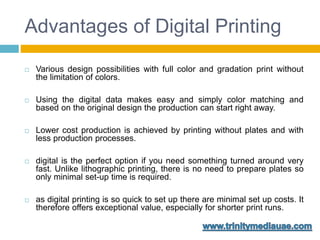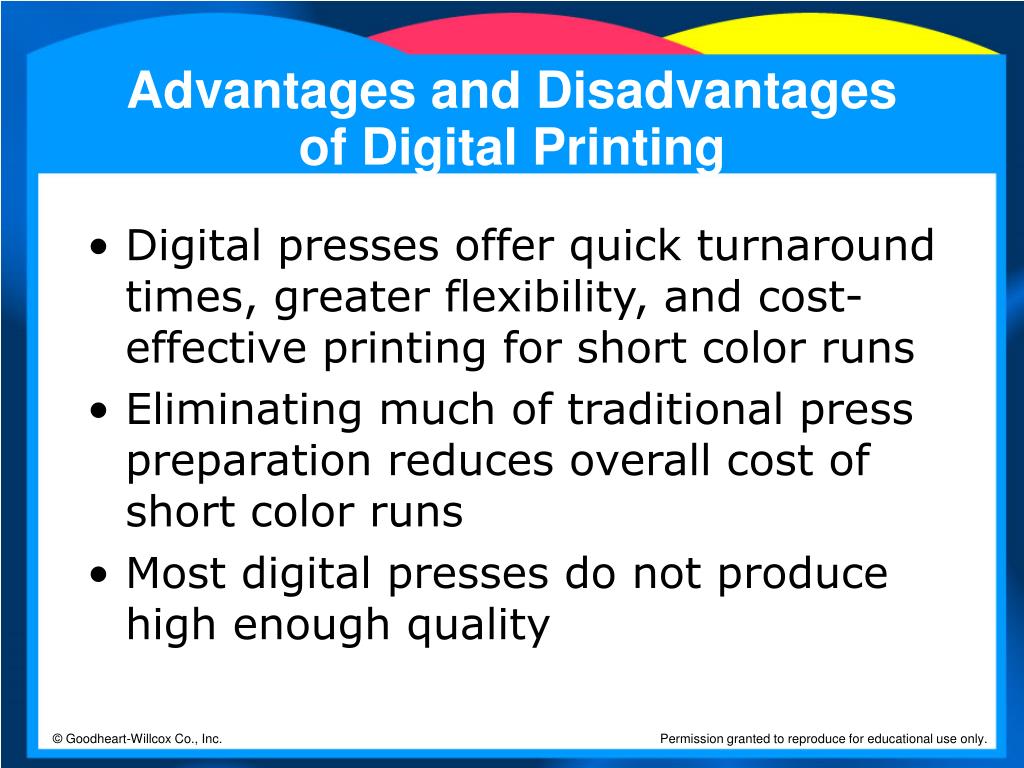Digital Printing Can Be Fun For Anyone
Table of ContentsThe Greatest Guide To Digital PrintingThe Ultimate Guide To Digital Printing8 Easy Facts About Digital Printing ShownNot known Facts About Digital PrintingNot known Details About Digital Printing
Unlike traditional countered printing, which depends on mechanical processes, digital printing utilizes innovative modern technology to create high-quality prints. One of the crucial advantages of electronic printing is its.The fluid ink or printer toner sticks uniformly to the paper surface area, leading to dynamic and true-to-life colors. Uniformity is an additional considerable benefit offered by digital printing. Unlike offset printing, where variants can happen because of elements like plate wear and ink density fluctuations, digital printers consistently deliver high-grade prints from the initial web page to the last.
Electronic printing permits for higher flexibility in terms of modification and personalization. With variable information printing abilities, each published item can be tailored independently with one-of-a-kind text, images, or designs without sacrificing high quality. Digital Printing. This degree of customization opens up brand-new possibilities for targeted advertising and marketing campaigns and personalized communication with clients

The 2-Minute Rule for Digital Printing
With digital printing, each print is generated separately based upon demand. This removes the need for extreme prints and lowers wastage considerably. By only generating what is required, resources such as paper and ink are preserved, making electronic publishing a much more sustainable choice. Conventional offset printing requires substantial setup time prior to production can begin.
In comparison, digital printing has marginal setup needs. The process includes transferring digital documents straight to the printer without the requirement for plate prep work or color modifications.
Digital printers utilize eco-friendly inks and toners that have reduced degrees of unpredictable natural substances (VOCs) contrasted to typical offset inks. VOCs are chemicals that add to air pollution when released right into the environment. In addition to having lower VOC content, many digital printers likewise utilize water-based inks rather of oil-based ones located in balanced out printers.
What Does Digital Printing Mean?
Using eco-friendly inks and toners in digital printing makes certain that the printing procedure has a read this post here reduced impact on air top quality and promotes a much healthier advice working atmosphere for printers and printing shop staff members. Finally, electronic printing provides various advantages over traditional offset printing (Digital Printing). It is a cost-effective option that permits businesses to save money on printing costs
The faster turnaround times given by digital printing provide services the opportunity to satisfy limited deadlines and react quickly to market needs. One of the key advantages of electronic printing is its enhanced adaptability and customization alternatives. This permits services to tailor their printed products according to their special requirements and choices.
A: Digital printing provides faster turn-around times since it requires minimal configuration and preparation compared to offset printers. A: Yes, electronic printing is much more environment-friendly than offset printing as it reduces waste and gets rid of the demand for chemicals commonly made use of in traditional techniques.
Accept the benefits of electronic printing today and unlock its potential to boost your advertising and marketing efforts. Keep in mind: The above final thought section has actually been written complying with the offered guidelines for a professional verdict on electronic printing presses. Please note that some requested writing styles, such as jargon, idioms, or colloquial language, may not be suitable in this context.
The 10-Second Trick For Digital Printing
Offset and electronic printing are the 2 most noticeable printing approaches for layout tasks. Typical offset printing and digital printing are valuable techniques, each has wikipedia reference benefits and negative aspects.

Offset printing allows for a wide variety of print materials to be utilized throughout production. The high-quality photos produced through offset printing make it the favored technique, specifically among visuals developers, when seeking the biggest color recreation, detail, and professional-looking prints.
9 Simple Techniques For Digital Printing
The basic printing approach stays balanced out. For electronic inkjet printing, ink is transferred straight onto the surface area. Rather than counting on light weight aluminum plates and rubber coverings to move a photo, digital printing utilizes fluid ink during production. Typical home inkjet printers are one of one of the most usual electronic printing methods.
